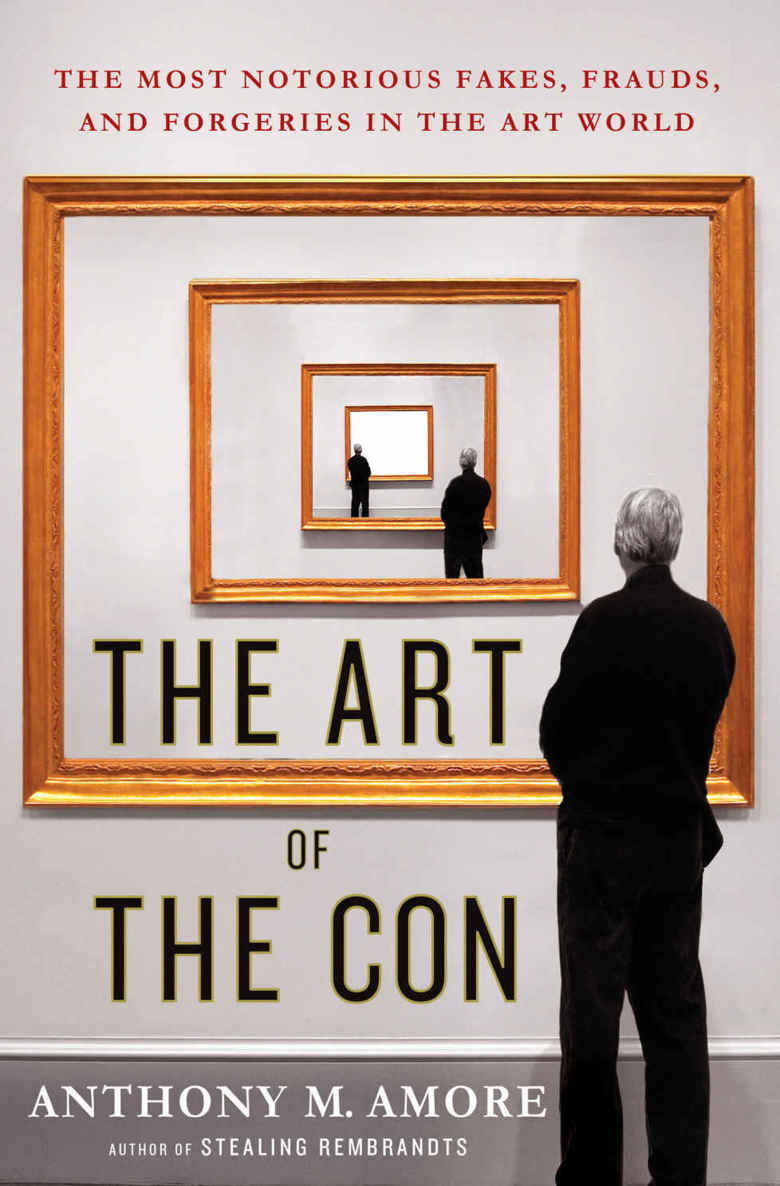
The Art of the Con
The Most Notorious Fakes, Frauds, and Forgeries in the Art World
کتاب های مرتبط
- اطلاعات
- نقد و بررسی
- دیدگاه کاربران
نقد و بررسی

May 4, 2015
As head of security and chief investigator at Boston’s Isabella Stewart Gardner Museum, Anthony Amore (Stealing Rembrandts) is privy to more information on the subject of forgeries than the average art collector or dealer, and he shares a number of those stories in this engrossing account. According to Amore, art forgery has been part of the American art scene since the country’s inception, most famously illustrated by the rampant copies of Gilbert Stuart’s portrait of George Washington that circulated at the turn of the 19th century. (That portrait now graces the $1 bill.) Rather than simply offering a laundry list of forgeries and hucksters, Amore shows the lengths forgers will go to in order to fool their patrons and the public, such as hunting down historically accurate materials (e.g., pigments), commissioning artists (“copyists”), and attempting various weathering techniques (even using a blow dryer in some cases to weather the paint). One shocking example involves surrealist artist Salvador Dalí, who as part of a lawsuit was ordered by the court to sign 17,000 blank sheets of paper, ultimately putting the provenance of his entire body of work up for debate. This is a bracing and highly informative assessment of a very real problem, sure to resonate with art fans and curators alike. Agent: Sharlene Martin, Martin Literary Management.

April 15, 2015
The big business of art fraud. Former Metropolitan Museum of Art Director Thomas Hoving once declared that 40 percent of art in museums is fake. The FBI has a special, highly trained Art Crime Team, and the London-based Art Loss Register has compiled a database of nearly 200,000 stolen artworks. Amore (co-author: Stealing Rembrandts: The Untold Stories of Notorious Art Heists, 2011, etc.), head of security at the Isabella Stewart Gardner Museum, offers riveting profiles of ingenious con men and women who have duped gallery owners, collectors, museum officials, and appraisers to pass off forged paintings as originals by the most famous artists in the world. Among them are Pei-Shen Qian, a talented Chinese immigrant in need of money who produced abstract expressionist paintings complete with the signatures of Pollack, Rothko, and de Kooning; and the brilliant Wolfgang Beltracchi, who claimed that he "channeled" the spirits of the artists whose works he imitated. Forgers, Amore notes, are usually "middle-aged men frustrated by their own failures as artists (or perhaps the failure of the art world to recognize their greatness)." They tend to produce impressionist or abstract expressionist paintings since they are easier to make than old masters; and they work in oils, not the more delicate watercolors. To sell forgeries, they must come up with each work's provenance, or record of ownership, producing documents that themselves are fake. Art scams require buyers: one con man who auctioned worthless paintings on eBay believed that buyers were motivated by "optimistic self-delusion" that "they have found something good." That self-delusion might even explain why the head of New York's famed Knoedler Gallery was taken in by forgers: probably, writes the author, "she was intoxicated by the prospect of being part of the unleashing of a heretofore unknown collection on the world." An engrossing read about brazen, artful scams.
COPYRIGHT(2015) Kirkus Reviews, ALL RIGHTS RESERVED.

June 15, 2015
Art scams are so common today that many specialists shy away from authenticating artworks, which in the past ensured the works' authorship or originality, and thereby value. Amore (coauthor, Stealing Rembrandts), director of security at Boston's Isabella Stewart Gardner Museum and internationally recognized expert in the field of art theft and security, relies on interviews and newly released court documents to reveal some of the most notorious cons and their histories: the fakes, frauds, forgeries, Ponzi schemes, double-dealing, telescams, and more. Eleven chapters cover at least one case each in great detail. The author's clear and mostly factual approach examines the various mind sets and motivations of the criminals, art brokers, collectors, dealers, artists, and other individuals involved. Fascinating and at times spellbinding, this book reads like a series of case studies, setting forth the crimes of many well-known and lesser-known miscreants and entities. VERDICT Of significant interest to art world aficionados, brokers, collectors, dealers, lawyers, professionals, and general readers, this ambitious, well-presented and well-documented survey belongs in public as well as academic and special libraries.--Cheryl Ann Lajos, Free Lib. of Philadelphia
Copyright 2015 Library Journal, LLC Used with permission.

























دیدگاه کاربران